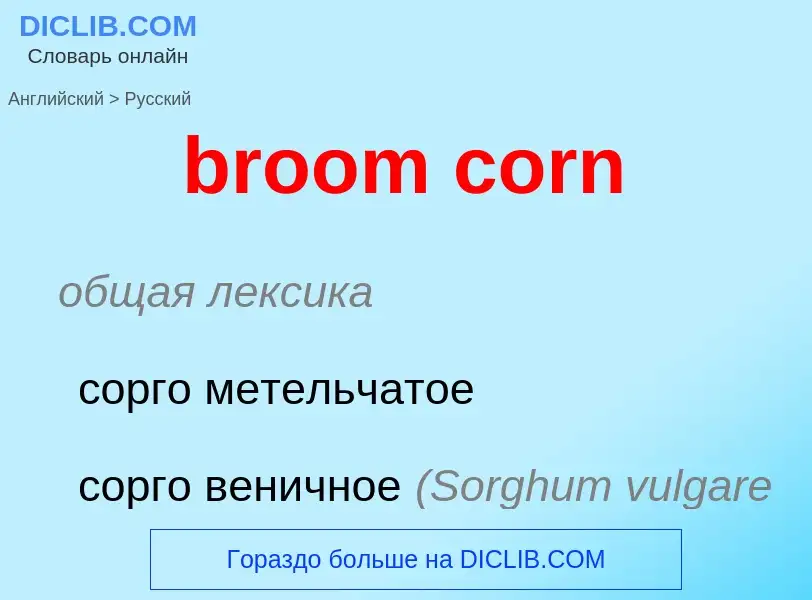Translation and analysis of words by ChatGPT artificial intelligence
On this page you can get a detailed analysis of a word or phrase, produced by the best artificial intelligence technology to date:
- how the word is used
- frequency of use
- it is used more often in oral or written speech
- word translation options
- usage examples (several phrases with translation)
- etymology
broom corn - translation to russian
общая лексика
сорго метельчатое
сорго веничное (Sorghum vulgare var. technicum)
Смотрите также
['kɔ:nfed]
прилагательное
американизм
вскормленный кукурузой (о скоте)
презрительное выражение
пышущий здоровьем
выросший на деревенских хлебах
простодушный
простоватый
наивный
Definition
Wikipedia

Sorghum bicolor, commonly called sorghum () and also known as great millet, broomcorn, guinea corn, durra, imphee, jowar, or milo, is a grass species cultivated for its grain, which is used for food for humans, animal feed, and ethanol production. Sorghum originated in Africa, and is now cultivated widely in tropical and subtropical regions. Sorghum is the world's fifth-most important cereal crop after rice, wheat, maize, and barley, with 61,000,000 metric tons (60,000,000 long tons; 67,000,000 short tons) of annual global production in 2021. S. bicolor is typically an annual, but some cultivars are perennial. It grows in clumps that may reach over 4 metres (13 ft) high. The grain is small, ranging from 2 to 4 millimetres (0.079 to 0.157 in) in diameter. Sweet sorghums are sorghum cultivars that are primarily grown for forage, syrup production, and ethanol; they are taller than those grown for grain.
Sorghum bicolor is the cultivated species of sorghum; its wild relatives make up the botanical genus Sorghum.




 p. p. sl32.jpg?width=200)


![alt=Field in [[Addi Azmera]] alt=Field in [[Addi Azmera]]](https://commons.wikimedia.org/wiki/Special:FilePath/Sorghum in Addi Azmera.jpg?width=200)
![defence against birds]]. defence against birds]].](https://commons.wikimedia.org/wiki/Special:FilePath/Turpan Millet.jpg?width=200)
![Illustration of ''C. scoparius'' from ''[[Köhler's Medicinal Plants]]'' (1887) Illustration of ''C. scoparius'' from ''[[Köhler's Medicinal Plants]]'' (1887)](https://commons.wikimedia.org/wiki/Special:FilePath/Cytisus scoparius - Köhler–s Medizinal-Pflanzen-200.jpg?width=200)

